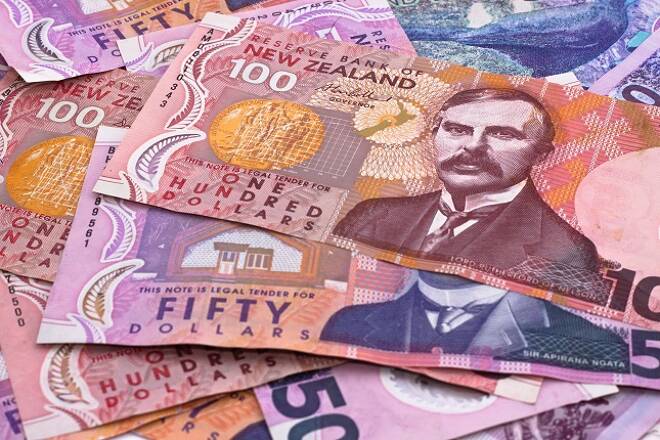Advertisement
Advertisement
New Zealand dollar breaks down again on Thursday
Updated: May 18, 2018, 05:31 UTC
The New Zealand dollar continues to be negative overall as Thursday was very soft. I think that the market is probably going to look towards the 0.68 level, which is a longer-term floor in the market. This is a very negative turn of events, and I believe there will be a huge battle there.
The New Zealand dollar has broken down a bit during the trading session on Thursday, slicing through the 0.69 level, an area that shows signs of major support on longer-term charts. It looks like the market is going to test that area eventually, and I think that eventually signs of negativity will appear on short-term charts that you can continue to short. The 0.69 level above is an area that would make sense as it is a large come around, psychologically significant figure. The 0.68 level underneath is massive support going back several years, so I think that if we were to break down below there the market could unwind rather drastically. I think we are going to continue to see US dollar strength over the course of the summer, so it makes sense that we would see this market fall. I think the 0.70 level above is going to be massive resistance, but if we were to turn around and finally break above that level, then I think the markets could continue to go much higher.
Expect volatility, but with a strengthening US dollar it could hurt a lot of commodity markets. If that happens, that should also put bearish pressure on the New Zealand dollar. The market breaking down below the 0.68 level sends this market looking for the next major support level in the longer-term charts, the 0.65 handle. This would of course be a major turn of events, so I think short-term selling is probably the best way.
NZD/USD Video 18.05.18
About the Author
Christopher Lewisauthor
Being FXEmpire’s analyst since the early days of the website, Chris has over 20 years of experience across various markets and assets – currencies, indices, and commodities. He is a proprietary trader as well trading institutional accounts.
Did you find this article useful?
Latest news and analysis
Advertisement
